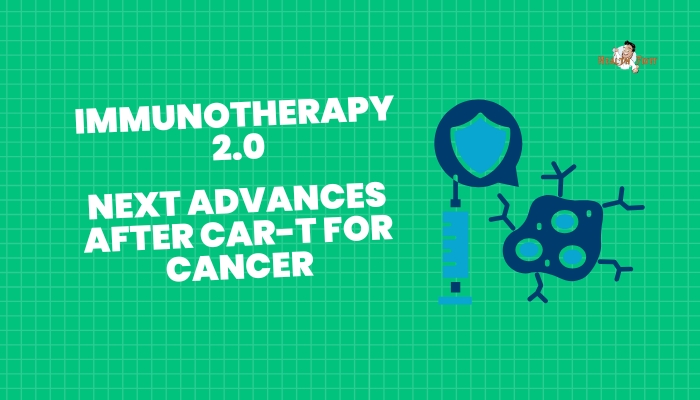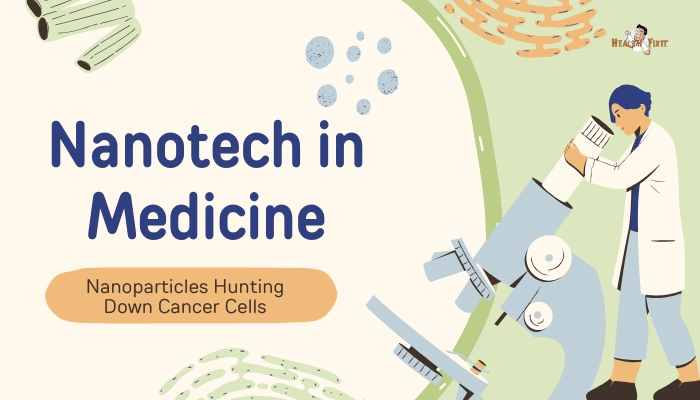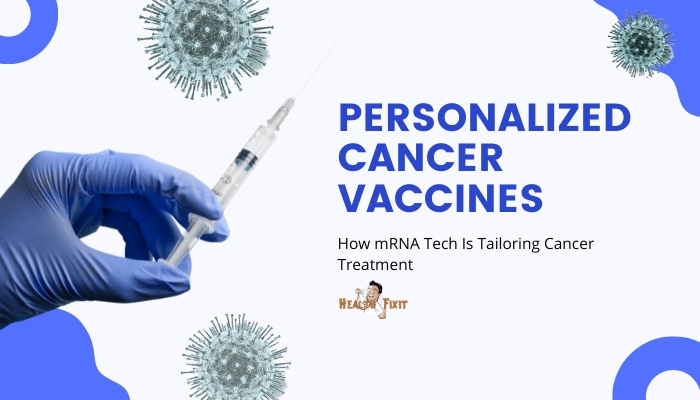Introduction
Messenger RNA (mRNA) vaccines made global headlines during the COVID-19 pandemic. Their rapid development and high efficacy demonstrated how this platform could revolutionize immunization against infectious diseases.
Yet the potential of mRNA vaccines extends far beyond COVID-19. Researchers now apply similar methods to develop new vaccines against cancer, HIV, influenza, and other challenges.
By encoding vital protein instructions directly into the body, mRNA technology offers speed, flexibility, and robustness unmatched by conventional vaccines.
This article explores the science behind mRNA vaccines, highlighting their advantages and how they differ from traditional options.
We then delve into efforts to create next-gen vaccines targeting complex diseases like cancer and HIV, where conventional methods have faced decades of setbacks.
Finally, we discuss manufacturing, safety, and the future outlook—how a technology once seen as unproven could transform modern healthcare.
The Basics of mRNA Vaccines
How mRNA Vaccines Work
An mRNA vaccine delivers a genetic blueprint (mRNA) for a specific protein antigen—often a fragment of a virus, bacterium, or even a tumor cell marker. Once inside the body’s cells, the mRNA instructs the cells’ ribosomes to produce that protein. The immune system recognizes the protein as foreign and mounts a defensive response, creating antibodies and memory cells that protect against future encounters with the actual pathogen or cancer cell.
- Key Point: mRNA vaccines do not use the live pathogen. Instead, they rely on the body to generate the antigen from the provided mRNA instructions, reducing infection risks.
Rapid Development Cycle
Traditional vaccines use weakened or inactivated viruses (requiring time-intensive growth in eggs or cell cultures) or purified proteins. In contrast, mRNA can be chemically synthesized once the gene sequence is known:
- Identify gene encoding the desired antigen.
- Produce mRNA via in vitro transcription.
- Formulate it with lipid nanoparticles for delivery into cells.
This process is faster, as it bypasses the need to cultivate the pathogen or purify proteins at large scale.
Stability and Formulation
While mRNA is fragile, lipid nanoparticles (LNPs) stabilize and protect it from degradation, delivering it to cells in the muscle or bloodstream. Once inside the cytoplasm, the mRNA remains active briefly, enough to produce sufficient antigen but then degrades, minimizing long-term side effects.
Beyond COVID-19: Emerging Targets for mRNA Vaccines
] Cancer Vaccines
Cancer arises from abnormal cell growth with mutated proteins. mRNA vaccines can teach the immune system to recognize these cancer-specific or tumor-associated antigens:
- Personalized Neoantigen Vaccines
- Each tumor has unique mutations generating novel (“neo”) peptides.
- By sequencing a patient’s tumor DNA and identifying these neoantigens, labs design mRNA that encodes them.
- Injecting the resulting vaccine triggers a T cell attack specifically on the tumor.
- Each tumor has unique mutations generating novel (“neo”) peptides.
- Off-the-Shelf Cancer Vaccines
- Some cancers share common markers (e.g., HER2 in certain breast cancers). An mRNA vaccine could encode these proteins for broad patient use.
- Some cancers share common markers (e.g., HER2 in certain breast cancers). An mRNA vaccine could encode these proteins for broad patient use.
Encouraging early trials in melanoma and other solid tumors show mRNA-based immunotherapy can spark potent, tumor-specific immune responses. Combining these vaccines with immune checkpoint inhibitors (like anti-PD-1) may further enhance cancer-fighting efficacy.
HIV Vaccines
HIV’s high mutation rate and complex immune evasion have thwarted vaccine development for decades. However, mRNA technology offers:
- Fast Adaptation: Rapidly updating vaccine sequences to match viral strains.
- Broadly Neutralizing Antibodies: MRNA constructs can encode antigens or engineered proteins designed to elicit these elusive antibodies that target multiple HIV variants.
Groups like Moderna, in partnership with the International AIDS Vaccine Initiative (IAVI), test mRNA-based HIV immunogens in early-phase clinical trials. If successful, these prototypes might finally crack the puzzle of preventing HIV infection globally.
Influenza and Other Infectious Diseases
The annual flu shot relies on predictions of circulating strains, grown in eggs over months. An mRNA-based flu vaccine could:
- Easily Update: If new strains emerge mid-season, manufacturers can quickly revise the formula.
- Polyvalent Formulas: mRNA allows incorporating multiple strain segments in a single vaccine more easily.
- Rapid Scaling: If a pandemic flu arises, mass production could ramp up swiftly.
Similar logic applies to pathogens like RSV, Zika, Nipah, or emerging viruses. mRNA’s design flexibility means developers can respond quickly to new threats.
Manufacturing and Scale
Scaling up mRNA production for global vaccination is easier than older methods that rely on:
- Egg-based virus culture
- Bacterial fermentation
- Protein purification from mammalian cells
Instead, mRNA uses enzymatic reactions in bioreactors, requiring fewer steps:
- Synthesize DNA template
- In vitro transcription to produce mRNA
- Encapsulate in lipid nanoparticles
While initial bottlenecks (e.g., lipid supply, specialized reagents) existed during the COVID-19 vaccine rollout, the industry rapidly overcame many hurdles. Investments in new facilities and partnerships mean future vaccines can be produced even faster.
Safety and Efficacy Considerations
Short-Lived mRNA
mRNA rapidly degrades in cells, limiting the time it can produce antigens. This ensures no permanent genetic alteration. Studies confirm that mRNA does not integrate into DNA or linger in tissues long-term.
Reactogenicity
Some individuals experience short-term side effects (soreness, fatigue, fever) as the immune system responds to the vaccine. Though generally mild, these side effects reflect the robust immune activation that also yields high efficacy.
Rare Adverse Events
Post-marketing surveillance is crucial. While severe reactions (e.g., anaphylaxis) are rare, ongoing monitoring helps detect any unexpected signals. The global COVID-19 experience demonstrated that large-scale data can quickly identify potential issues and guide risk management.
Next Steps in Technology Evolution
Self-Amplifying RNA
Self-amplifying mRNA (saRNA) encodes replication machinery from alphaviruses, so each cell produces more copies of the antigen-encoding RNA. This approach could reduce the needed dose, making vaccines cheaper and expanding global reach.
Multi-antigen and Pan-Variant Shots
Researchers envision “universal” or “pan-variant” vaccines that combine mRNA instructions for many antigens or viral variants, broadening coverage. For influenza, universal vaccines might target conserved regions, limiting the need for yearly updates. For cancer, multi-peptide constructs can tackle multiple tumor mutations at once.
Combined mRNA Platforms
Future vaccines might address multiple pathogens in a single shot: for example, a combined COVID-19 + influenza + RSV mRNA vaccine, each formulated with its own sequence. This would reduce the number of separate injections patients need.
Potential Impact on Global Healthcare
If successful, next-gen mRNA vaccines for cancer and chronic infections like HIV might:
- Revolutionize Oncology
- Personalized cancer vaccines could become routine, transforming advanced cancers from lethal to chronic or even curable in some cases.
- Minimally invasive compared to many current therapies.
- Personalized cancer vaccines could become routine, transforming advanced cancers from lethal to chronic or even curable in some cases.
- End HIV Transmission
- An effective HIV vaccine would profoundly reduce new infections worldwide, especially if combined with current antiviral prevention tools.
- Large-scale immunization programs could ultimately eradicate or drastically curb the epidemic.
- An effective HIV vaccine would profoundly reduce new infections worldwide, especially if combined with current antiviral prevention tools.
- Streamlined Outbreak Responses
- If a novel virus emerges, mRNA vaccines can be designed and scaled up in record time.
- Countries could react to pandemics with far more agility, limiting spread and saving countless lives.
- If a novel virus emerges, mRNA vaccines can be designed and scaled up in record time.
- Equitable Access Challenges
- Some worry about intellectual property rights, supply chain constraints, and cold-chain requirements. Efforts to make technology and raw materials widely available are critical for global reach.
- Some worry about intellectual property rights, supply chain constraints, and cold-chain requirements. Efforts to make technology and raw materials widely available are critical for global reach.
Practical Tips for Patients and Clinicians
- Clinical Trials: Patients with certain cancers or those at high risk for HIV may find trials testing mRNA vaccines. Checking reputable trial registries and discussing with oncologists or infectious disease experts is recommended.
- Ongoing Research: While early-phase data looks promising, mass adoption for non-COVID targets will likely require more robust Phase III results and regulatory approvals.
- Safety Profile: mRNA vaccine technology has extensive safety data from COVID-19 deployment, but each new vaccine is unique and must undergo thorough evaluation.
- Stay Informed: The field evolves quickly. Healthcare providers should stay updated on guidelines and new approvals, providing patients accurate counsel on availability and benefits.
Conclusion
mRNA vaccines have quickly advanced from an experimental concept to a real-world solution, dramatically impacting the global COVID-19 response. Now, this platform’s adaptability propels it into new frontiers:
personalized cancer immunotherapy, HIV prevention, and universal flu shots, among others.
The combination of efficient manufacturing, high immunogenicity, and flexible design offers a blueprint for tackling longstanding medical challenges once seen as intractable.
Though hurdles remain—such as refining formulations, addressing intellectual property issues, and scaling for equitable global distribution—the momentum is undeniable.
As research and clinical trials expand, mRNA technology holds the promise of revolutionizing vaccines, both for emerging pathogens and for diseases that have eluded conventional strategies.
If these next-generation vaccines come to fruition, the potential benefits extend beyond controlling infectious diseases, offering breakthroughs in oncology, immunology, and ultimately shaping a healthier future for all.
References
- Pardi N, Hogan MJ, Porter FW, Weissman D. mRNA vaccines—a new era in vaccinology. Nat Rev Drug Discov. 2018;17(4):261–279.
- Crommelin DJA, Anchordoquy TJ, Volkin DB, et al. Addressing the cold reality of mRNA vaccine stability. J Pharm Sci. 2021;110(3):997–1001.
- Sahin U, Karikó K, Türeci Ö. mRNA-based therapeutics—developing a new class of drugs. Nat Rev Drug Discov. 2014;13(10):759–780.
- Pollard C, Rejman J. mRNA vaccination as a promising strategy: from injection site to target. Eur J Immunol. 2020;50(10):1859–1862.
- Kow CS, Hasan SS. mRNA vaccines: the future for prophylaxis and therapy. Crit Rev Clin Lab Sci. 2022;59(1):1–15.
- Zhang C, Maruggi G, Shan H, Li J. Advances in mRNA vaccines for infectious diseases. Front Immunol. 2019;10:594.
- Chaudhary N, Weissman D, Whitehead KA. mRNA vaccines for infectious diseases: principles, delivery and clinical translation. Nat Rev Drug Discov. 2021;20(11):817–838.
- Anderson EJ, Rouphael NG, Widge AT, et al. Safety and immunogenicity of SARS-CoV-2 mRNA-1273 vaccine in older adults. N Engl J Med. 2020;383(25):2427–2438.
- Kreiter S, Diken M, Selmi A, et al. Novel RNA-based cancer vaccines. Cancer Immunol Immunother. 2011;60(2):299–303.
- Pegu A, Nason M, Hu Z, et al. Influence of immune activation and inflammatory cytokine production on HIV vaccine responses. J Infect Dis. 2022;226(3):544–554.






